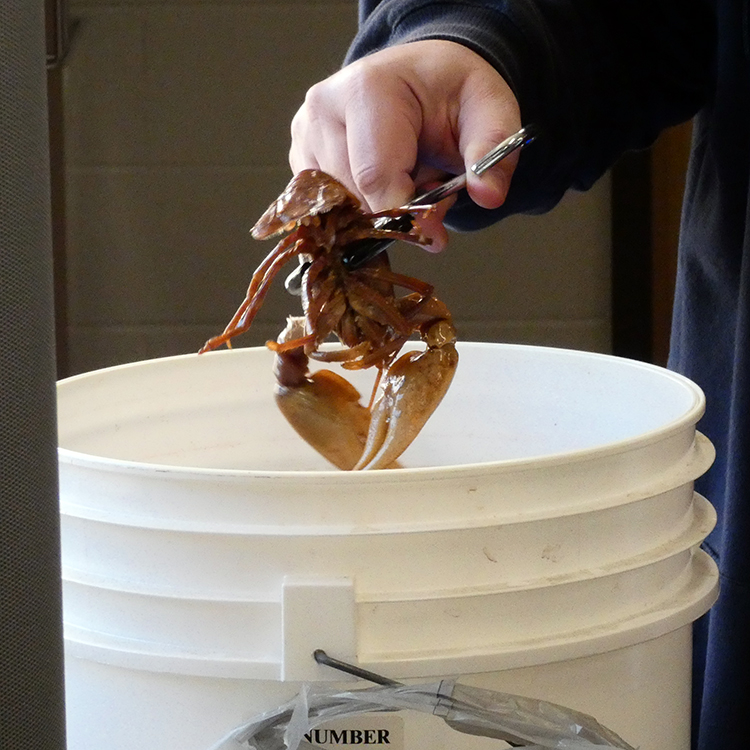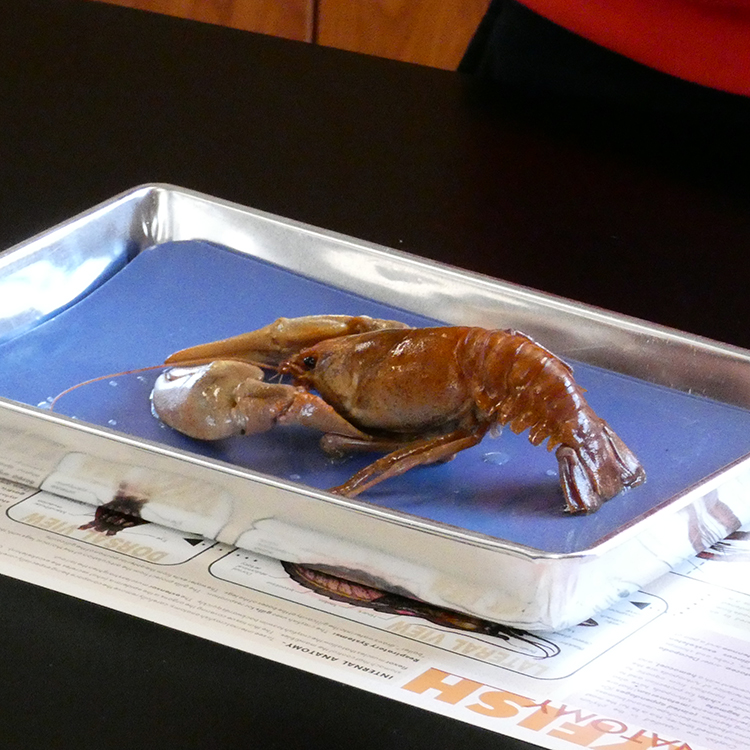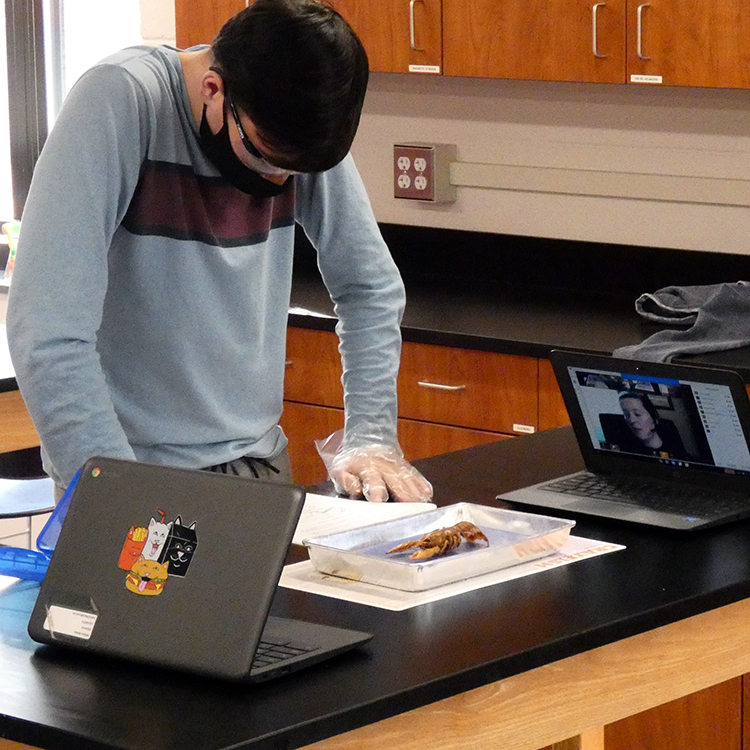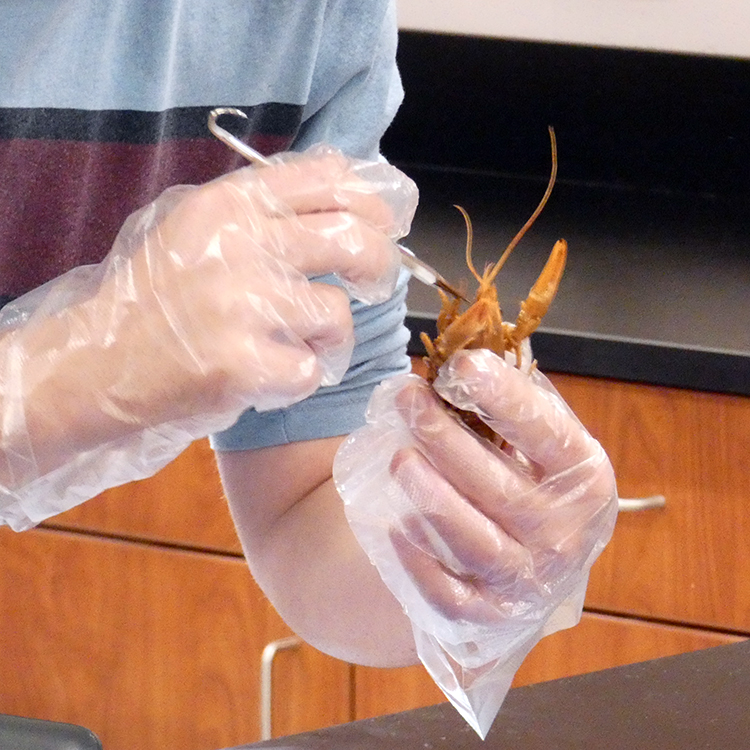Ms. Muncy’s Biology class, which is made up mostly of sophomores and juniors, were led remotely through a lab that involved the dissection of a crayfish.
The aim of the lab was for students to work independently or in pairs in order to achieve a greater understanding of the invertebrate through hands-on dissection and exploration of crustacean anatomy.
With Chromebook cameras trained on the lab trays, Ms. Muncy guided students through all the parts of the lab which started with the examination of the exoskeleton of the crayfish and progressed through the use of straight and bent teasing needles to identify other external structures of the crayfish and finally the use of dissecting scissors to lay bare and identify the specimen’s internal organs.
To document their progress, students took photos with their smartphones before turning in their lab reports. The photos of crayfish anatomy will also be used to do a comparative anatomy assignment where students will compare a crayfish and a starfish.






